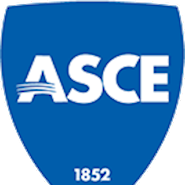 ]
]
Phelan’s diverse civil engineering career has included involvement in the final design of two world-record bridges. He has authored or co-authored over 20 peer-reviewed professional journal articles, research reports, and proceeding papers.
In the early 1990s, Phelan employed FEA and closed-form mathematical solutions to demonstrate guideway design alternatives for zero residual guideway vibration based on the velocity of a passing high-speed rail or maglev vehicle. In the late 1990s, he developed and taught the first university-level bridge design class in the Texas using modern load and resistance factor design (LRFD) design principles. In the early 2000s, through innovative research using remote bridge instrumentation and monitoring, he and his team solved the critical cable-stayed bridge wind-rain vibration problem on the Veterans Memorial Cable-Stayed Bridge in Port Arthur, Texas. He was awarded three U.S. patents as a result.
While serving on the ASCE High Speed Ground Transportation Committee, Phelan was selected to represent the United States to present potential implementation corridors to the high-speed maglev vehicle manufacturer Transrapid, in Berlin, Germany. Additionally, he was one of four invited technical evaluation committee members for the U.S. Maglev Coalition Evaluation Committee's Maglev Guideway Beam Development Project, tasked with selecting a design firm for the best distribution of U.S. maglev research funding.
Phelan was one of the key structural engineers in the final design of two world-record bridge structures: the 8-mile-long Confederation Bridge in Prince Edward Island, Canada, and the 34-mile-long Bang Na-Chonburi Expressway in Bangkok. In 2005-06, he served as the sole site structural engineer for International Bridge Technologies of San Diego (now SYSTRA IBT), to complete construction according to the EOR’s design of the first precast bridge in the State of Washington – the C755 Sound Transit elevated guideway project.
In 2020-21, Phelan served as co-chair of the Seattle Department of Transportation (SDOT) Technical Advisory Panel (TAP). He was instrumental in developing the external posttensioning emergency repair solution being used for the West Seattle High Bridge (WSHB) and demonstrating the solution’s feasibility to SDOT and to the bridge repair design firm’s EOR. The $500 million WSHB was Seattle’s busiest highway crossing before its sudden, forced closure in 2020 due to safety concerns.
Phelan currently serves as the owner’s representative structural design lead for the new $800 million Earthquake-Ready Burnside (EQRB) Bridge GC/CM movable-bridge project, in Portland, Oregon. He also serves on the national ASCE T&DI Economics & Finance Committee.
He maintains active interest in high-speed rail, megaproject planning and economics, offshore wind energy, private equity, project financing, and alternate delivery of infrastructure projects.
Phelan is a licensed professional engineer in six U.S. states and two Canadian provinces, and a licensed structural engineer in two U.S. states. He earned his three university degrees in civil and environmental engineering: a bachelor’s from Texas Tech University, master’s from Carnegie Mellon, and doctorate from MIT.



